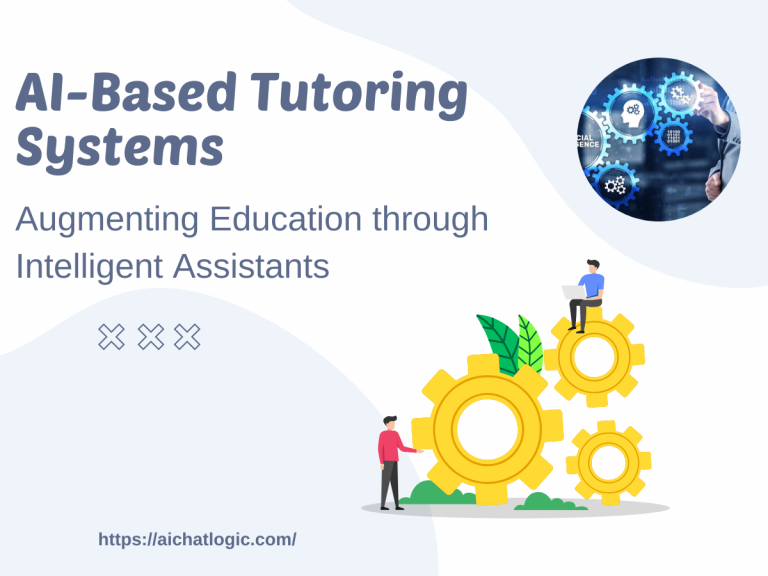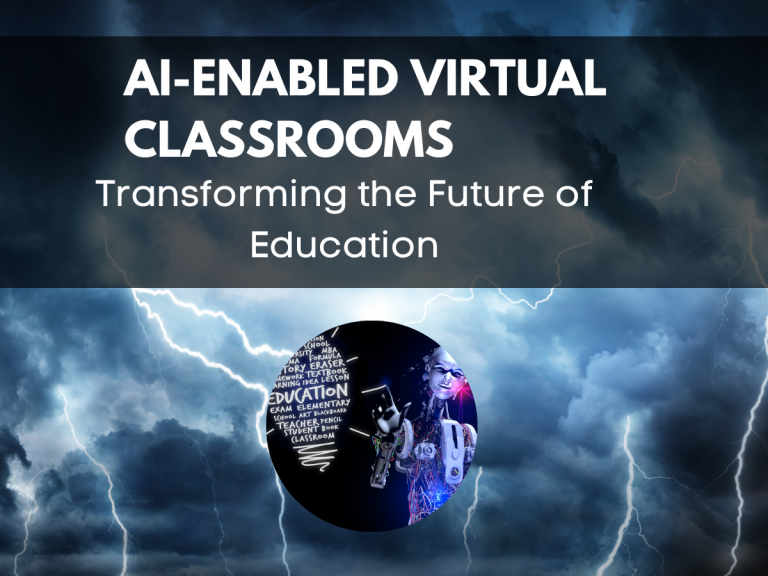1. Introduction
Virtual learning has gained immense popularity in the education sector due to its flexibility and accessibility. With the COVID-19 pandemic accelerating the adoption of online education, educators and students have faced new challenges in creating engaging and effective learning environments. In response, AI technologies have emerged as a game-changer, providing innovative solutions to improve the virtual learning experience.
2. The Rise of Virtual Learning
The rapid growth of the internet and digital technologies has paved the way for virtual learning to flourish. Online platforms and learning management systems have made it possible for students to access educational resources from anywhere, at any time. Virtual classrooms, video conferencing tools, and collaborative online platforms have bridged the gap between students and teachers, enabling interactive learning experiences.
3. The Role of AI in Education
AI has the potential to revolutionize education by offering personalized and adaptive learning experiences. Let’s explore some of the key roles AI plays in enhancing virtual learning:
3.1 AI-Based Personalized Learning
AI algorithms can analyze vast amounts of student data to create personalized learning pathways. By understanding students’ strengths, weaknesses, and learning preferences, AI systems can provide tailored recommendations and adaptive content. This individualized approach helps students learn at their own pace, increasing engagement and improving knowledge retention.
3.2 Intelligent Tutoring Systems
Intelligent tutoring systems powered by AI can simulate human tutors and provide real-time guidance to students. These systems can detect misconceptions, offer explanations, and deliver targeted feedback. By providing immediate support and addressing students’ specific learning needs, intelligent tutoring systems contribute to more effective virtual learning experiences.
3.3 Automated Grading and Feedback
AI-powered grading systems can automate the assessment process, saving educators time and effort. Machine learning algorithms can analyze students’ assignments, quizzes, and tests, providing accurate and timely feedback. Automated grading not only speeds up the assessment process but also ensures consistency and fairness in evaluations.
3.4 Virtual Classrooms and ChatBots
AI technologies enable the creation of virtual classrooms where students can interact with their peers and teachers. Virtual classrooms offer collaborative tools, discussion forums, and interactive multimedia resources that enhance student engagement. Additionally, chatbots integrated into virtual learning environments can answer students’ questions, provide support, and facilitate instant communication.
4. Introducing ChatGPT
ChatGPT is an advanced language model developed by OpenAI. It uses deep learning techniques to generate human-like text responses based on given prompts. Trained on a wide range of texts, ChatGPT can understand and generate coherent responses to various queries and topics. Its versatility and ability to engage in meaningful conversations make it a valuable asset in the field of education.
5. ChatGPT and Virtual Learning
ChatGPT offers several advantages that contribute to enhancing virtual learning environments:
5.1 Enhancing Student Engagement
ChatGPT can engage students in interactive conversations, making the learning experience more immersive and enjoyable. By providing dynamic and personalized responses, ChatGPT creates a virtual tutor-like experience, encouraging students to actively participate and explore different concepts.
5.2 Supporting Individualized Learning
With its ability to understand students’ unique learning needs, ChatGPT can provide personalized recommendations and learning resources. By adapting to students’ preferences and offering targeted assistance, ChatGPT promotes self-directed learning and empowers students to explore subjects at their own pace.
5.3 Improving Learning Outcomes
ChatGPT’s intelligent responses and feedback contribute to improved learning outcomes. Students can seek clarifications, ask questions, and receive guidance from ChatGPT, leading to a deeper understanding of the topics. The continuous availability of a knowledgeable AI companion fosters a supportive learning environment.
6. Challenges and Ethical Considerations
While AI, including ChatGPT, presents exciting opportunities for education, it also poses certain challenges and ethical considerations:
6.1 Bias and Fairness
AI systems can unintentionally perpetuate biases present in the data they are trained on. To ensure fairness and equal opportunities for all students, it is crucial to address bias during AI model development and continuously monitor and evaluate the system’s outputs.
6.2 Privacy and Data Security
The use of AI in education involves collecting and analyzing sensitive student data. Protecting student privacy and ensuring data security should be top priorities. Implementing robust data protection measures and complying with relevant regulations are essential in maintaining trust and safeguarding student information.
6.3 Maintaining Human Connection
While AI technologies can provide valuable support, it is important to strike a balance and maintain human connection in virtual learning environments. Educators play a vital role in fostering meaningful relationships with students, addressing their socio-emotional needs, and creating a supportive learning community.
7. The Future of AI in Education
The integration of AI in education is an ongoing process with vast potential for growth and innovation. As AI technologies continue to advance, we can expect further improvements in personalized learning experiences, intelligent content creation, and more sophisticated virtual learning environments. The future of education is undoubtedly intertwined with the transformative power of AI.
8. Conclusion
The synergy between virtual learning and AI, particularly with the introduction of ChatGPT, holds tremendous promise for enhancing education. By leveraging the capabilities of AI, educators can provide personalized, engaging, and effective virtual learning experiences for students. However, it is crucial to address challenges and ethical considerations associated with AI implementation to ensure fairness, privacy, and human connection. As we move forward, embracing AI’s potential while upholding educational values will shape a future where virtual learning becomes even more impactful.
FAQs
Q1: Can ChatGPT completely replace human teachers in virtual learning?
No, ChatGPT is designed to assist and enhance the virtual learning experience, but it cannot replace human teachers. Educators play a crucial role in providing guidance, mentorship, and addressing students’ holistic needs.
Q2: Are there any limitations to using ChatGPT in education?
While ChatGPT is a powerful tool, it has limitations. It relies on pre-existing data and may not always provide accurate or contextually appropriate responses. It is important to carefully integrate ChatGPT into educational settings and ensure human oversight.
Q3: How can AI help address educational inequalities?
AI can contribute to addressing educational inequalities by offering personalized learning experiences tailored to individual students’ needs. It can bridge gaps in access to resources and support, providing equal opportunities for all learners.
Q4: What steps can be taken to ensure AI systems in education are unbiased?
To ensure unbiased AI systems, it is crucial to diversify training data, regularly evaluate system outputs for bias, and involve diverse stakeholders in AI model development and decision-making processes.
Q5: How can AI support students with special educational needs?
AI can provide personalized interventions and adaptive learning experiences for students with special educational needs. It can offer customized resources, assistive technologies, and real-time feedback to accommodate diverse learning styles and abilities.












+ There are no comments
Add yours